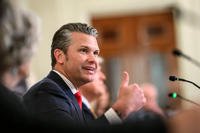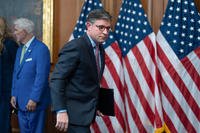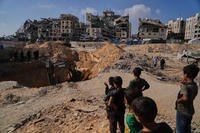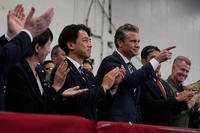Nathalie Grogan is a Research Assistant in the Military, Veterans, and Society Program at the Center for a New American Security.
The onset of the COVID-19 pandemic has upended daily life as Americans previously knew it, with one of the most significant disruptions affecting children’s education. Closed school buildings, remote learning and the daily stresses of life in a pandemic have combined to create extreme stress on the educational trajectories of children across the country and the world. But few are discussing one group of students facing additional hardships and difficulties in the pandemic: military children. During this time of upheaval and stress, we owe it to military children to keep their interests in mind and make sure they are not lost in the shuffle.
The coronavirus pandemic and the public health measures necessary to curb the spread of the disease have wreaked havoc on traditional models of education and learning. At the time of publication, 10 states, Puerto Rico, and the District of Columbia have state-ordered full or partial school closures in effect. Four state governments have ordered schools to remain open. The remaining 36 states lack a statewide directive on school closures, leaving the decision up to individual school districts. Children have been forced to adjust almost overnight to a dramatically different academic environment. The children of service members are no exception, but they also have the added complications of military life.
Even without a global pandemic, over two million military children face educational challenges due to frequent relocations, changing curriculums and educational standards between school systems. The average military child moves six to nine times before they graduate from high school. Such frequent moves and educational changes put many military children at risk of falling behind academically, which can snowball into increasingly serious problems for adulthood. Students who struggle to keep up with their peers at a young age have a much harder time catching up and reaching grade-level benchmarks to put them on track for college or a career.
The pandemic has only exacerbated the challenges these children face. The learning adjustment required by the shift to virtual or hybrid learning environments has been a significant challenge for military children and families. School closures are frequently cited as ‘extremely concerning’ to military family members and advocates, and K-12 education support is a top priority for active duty military members. military families who homeschool their children -- an increasing percentage of the community -- also face new challenges related to COVID-19, as beneficial group activities are discouraged by public health experts.
For military children who have started at a new school since March 2020, the experience of integrating into a new environment looks very different from previous PCS (Permanent Change of Station) moves and school switches. If students are attending school in-person, public health restrictions are limiting the new student orientation, extracurricular activities and social gatherings that are vital to joining a new school, meeting classmates, and making friends. If students are attending school remotely, the virtual environment makes it exceedingly challenging for new military children to make the personal connections necessary to integrate into their new environment. As has been studied during the COVID-19 pandemic, the effects of social isolation on children and adolescents include higher rates of mental health issues such as anxiety and depression.
Schools and educators should take the population of military-connected children, especially recent additions to the student body, into consideration when considering how to best adapt K-12 education to the COVID-19 reality of 2020. When possible, the continuation of extracurricular activities, either in person or remotely, provides an important support system to children experiencing relocation and possible parental deployments. Efforts should be made to simulate social introductions and community for new arrivals to schools during this academic year, which would benefit both military and non-military children dealing with additional changes on top of all of those forced by the novel coronavirus. For example, parents who have put together learning pods for their children should reach out to military-connected families in their district, especially new arrivals, and include their children. Including military children new to a school or district through learning pods, social community and extracurricular activities would help to counteract the isolating aspects of the COVID-19 pandemic on military children and lay the groundwork for a successful academic experience.
Several studies have been conducted researching the effects of the COVID-19 pandemic on military personnel and readiness due to school closures and child care challenges; these studies are in addition to research detailing the stresses placed on military families due to the economic crisis and accompanying military spouse unemployment rate increases. Yet very little has been studied or written on the experience of military children during the pandemic, unless to highlight the challenges placed on their service member parent or parents. In order to best serve military children, their individual needs must be taken into consideration as a separate entity from their military parents. While the well-being of military children is intimately connected with their parents, children have unique needs that are worth the time to research and uncover, especially during a year of tremendous upheaval and change.
The experiences of military-connected children are unlike those of the majority of their peers in a normal academic situation, and the constant challenges of COVID-19 have only added to the educational obstacles facing military children. Careful steps can and should be taken to ameliorate the academic challenges of military children who, at young ages, have sacrificed a great deal of stability and comfort for their parents’ military service. It’s up to us as a society — whether we are educators, neighbors, or citizens — to do what we can for them.
-- The opinions expressed in this op-ed are those of the author and do not necessarily reflect the views of Military.com. If you would like to submit your own commentary, please send your article to opinions@military.com for consideration.















